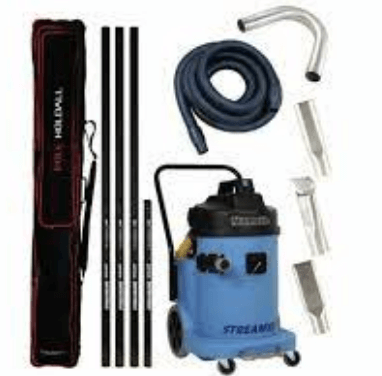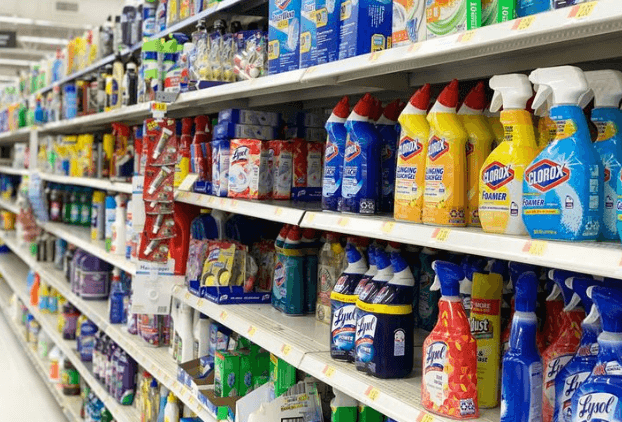Introduction
Storm drains play a crucial role in managing rainfall runoff and preventing flooding in urban areas. However, over time, these drains can accumulate debris, sediment, and other pollutants, hindering their ability to effectively channel water. Regular storm drain cleaning is essential to maintain proper functionality and prevent water pollution. This article explores the importance of storm drain cleaning and provides insights into the process, benefits, and frequently asked questions related to this critical maintenance activity.
Table of Contents
- Why Storm Drain Cleaning is Vital
- Understanding Storm Drain Systems
- Common Issues Caused by Clogged Storm Drains
- The Process of Storm Drain Cleaning
- Benefits of Regular Storm Drain Maintenance
- Professional Storm Drain Cleaning Services
- Do-It-Yourself Storm Drain Cleaning Techniques
- Best Practices for Preventing Storm Drain Clogs
- Environmental Impact of Neglecting Storm Drain Cleaning
- Regulations and Compliance Regarding Storm Drain Maintenance
- The Role of Communities in Storm Drain Cleaning
- Storm Drain Cleaning Equipment and Technology
- Signs That Indicate the Need for Storm Drain Cleaning
- Storm Drain Cleaning Frequency: How Often Should it be Done?
- Conclusion
- FAQs (Frequently Asked Questions)
1. Why Storm Drain Cleaning is Vital
Storm drain cleaning is vital for several reasons. Firstly, it helps prevent water pollution. When storm drains are clogged with debris, they cannot effectively transport rainwater to natural bodies of water. As a result, the accumulated water can become stagnant, leading to the growth of algae, bacteria, and other harmful pollutants. By ensuring regular cleaning, we can minimize the pollution risks associated with stormwater runoff.
2. Understanding Storm Drain Systems
Storm drains are an integral part of urban infrastructure designed to collect and channel rainwater away from streets, parking lots, and other paved surfaces. These systems consist of a network of pipes, inlets, catch basins, and underground storage tanks. Stormwater runoff is collected and conveyed through these components, ultimately reaching rivers, lakes, and oceans.
3. Common Issues Caused by Clogged Storm Drains
When storm drains become clogged, various issues can arise. Flooding is a primary concern, as clogged drains are unable to handle the volume of water during heavy rainfall. This can lead to property damage, traffic disruptions, and even safety hazards. Additionally, clogged storm drains can cause erosion, damage to road surfaces, and the deterioration of nearby infrastructure.
4. The Process of Storm Drain Cleaning
Storm drain cleaning involves the removal of debris, sediment, and other contaminants that accumulate within the drainage system. The process typically begins with a thorough inspection to identify the location and extent of the clogs. Depending on the severity of the blockage, manual or mechanical methods may be employed to clear the drains. These methods include vacuuming, high-pressure water jetting, and the use of specialized cleaning equipment. Check out www.rapidrestoreli.com to learn more.
5. Benefits of Regular Storm Drain Maintenance
Regular storm drain maintenance offers several benefits. Firstly, it ensures efficient drainage, reducing the risk of flooding and property damage. Properly functioning storm drains also help mitigate the environmental impact of stormwater runoff by preventing the accumulation of pollutants in water bodies. Furthermore, routine maintenance can extend the lifespan of storm drain infrastructure, saving municipalities and property owners from costly repairs or replacements.
6. Professional Storm Drain Cleaning Services
Professional storm drain cleaning services provide expertise and specialized equipment to effectively clean and maintain storm drains. These professionals have the knowledge and experience to identify and address clogging issues promptly. Hiring a professional service ensures thorough cleaning, minimizes disruptions, and helps prevent potential damages caused by improper handling of storm drain cleaning.
7. Do-It-Yourself Storm Drain Cleaning Techniques
While professional services are recommended for more complex situations, some minor storm drain cleaning tasks can be performed by individuals. Simple techniques such as using a rake, removing visible debris, and flushing drains with water can help prevent clogs. However, it is important to exercise caution and not attempt any extensive cleaning or repairs without proper knowledge or equipment.
8. Best Practices for Preventing Storm Drain Clogs
Prevention is key to maintaining clean storm drains. Adopting best practices can significantly reduce the likelihood of clogs. Some effective strategies include:
- Properly disposing of waste and litter in designated receptacles.
- Regularly cleaning and maintaining gutters and downspouts to prevent debris from entering storm drains.
- Implementing stormwater management systems, such as rain gardens or permeable pavement, to reduce runoff volume and pollutants.
- Conducting educational campaigns to raise awareness about storm drain maintenance and the importance of preventing pollution.
9. Environmental Impact of Neglecting Storm Drain Cleaning
Neglecting storm drain cleaning can have severe environmental consequences. Clogged drains contribute to increased pollution in water bodies, negatively impacting aquatic ecosystems. Pollutants, including chemicals, sediment, and debris, can harm aquatic life, disrupt habitats, and impair water quality. Additionally, the accumulation of standing water can become a breeding ground for mosquitoes, posing health risks to humans and animals.
10. Regulations and Compliance Regarding Storm Drain Maintenance
Many municipalities have regulations and compliance standards in place to ensure the proper maintenance of storm drains. These regulations aim to minimize the impact of stormwater runoff on the environment and public health. Property owners and municipalities are often responsible for adhering to these standards, which may include regular inspections, cleaning schedules, and reporting requirements.
11. The Role of Communities in Storm Drain Cleaning
Communities play a vital role in cleaning and maintenance. Local residents can contribute by adopting responsible waste disposal practices, reporting clogged or damaged drains to the appropriate authorities, and participating in community clean-up initiatives. By working together, communities can help protect their local waterways and ensure the efficient functioning of storm drain systems.
12. Storm Drain Cleaning Equipment and Technology
Advancements in equipment and technology have greatly improved the efficiency and effectiveness of storm cleaning. Specialized tools, such as high-pressure water jetters and vacuum trucks, can clear clogs quickly and safely. Additionally, inspection cameras and sonar equipment enable professionals to identify blockages and structural issues within the drainage system more accurately.
13. Signs That Indicate the Need for Storm Drain Cleaning
Several signs may indicate the need for drain cleaning, including:
- Frequent instances of localized flooding during rainstorms.
- Unusual odors emanating from storm drains.
- Slow or restricted water flow through catch basins and inlets.
- Presence of debris or sediment around storm drain openings.
- Visual signs of damage or collapse in storm drain infrastructure.
If any of these signs are observed, it is crucial to address the issue promptly to prevent further complications.
14. Storm Drain Cleaning Frequency: How Often Should it be Done?
The frequency of storm cleaning depends on various factors, such as the location, surrounding environment, and the drainage system’s size. Areas with high levels of debris or heavy rainfall may require more frequent cleaning. Generally, it is recommended to conduct routine inspections and cleanings at least once or twice a year.





